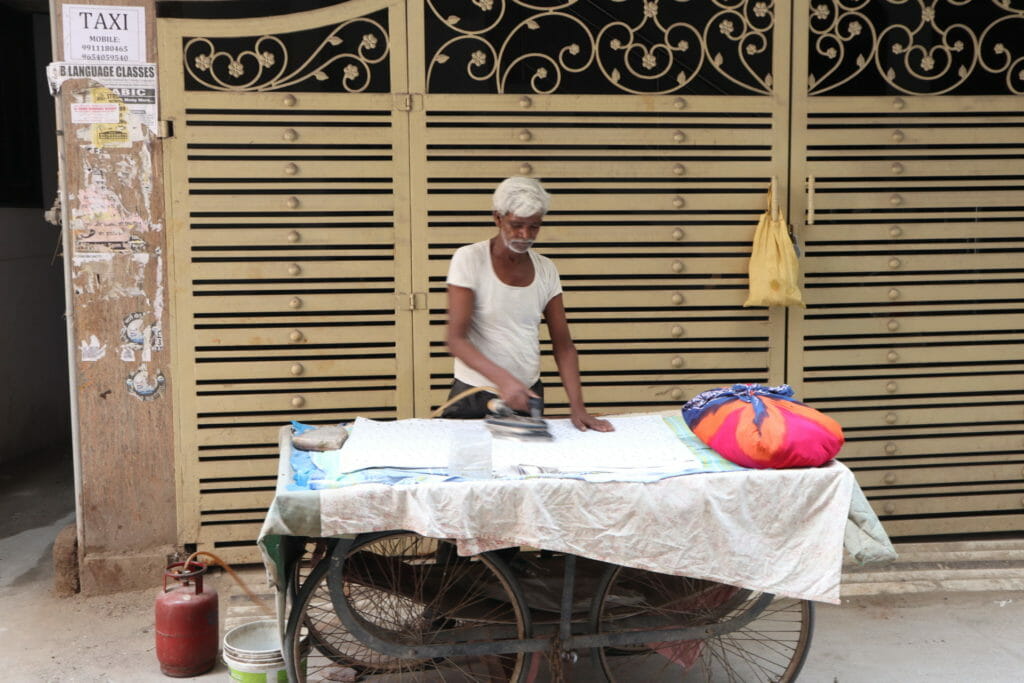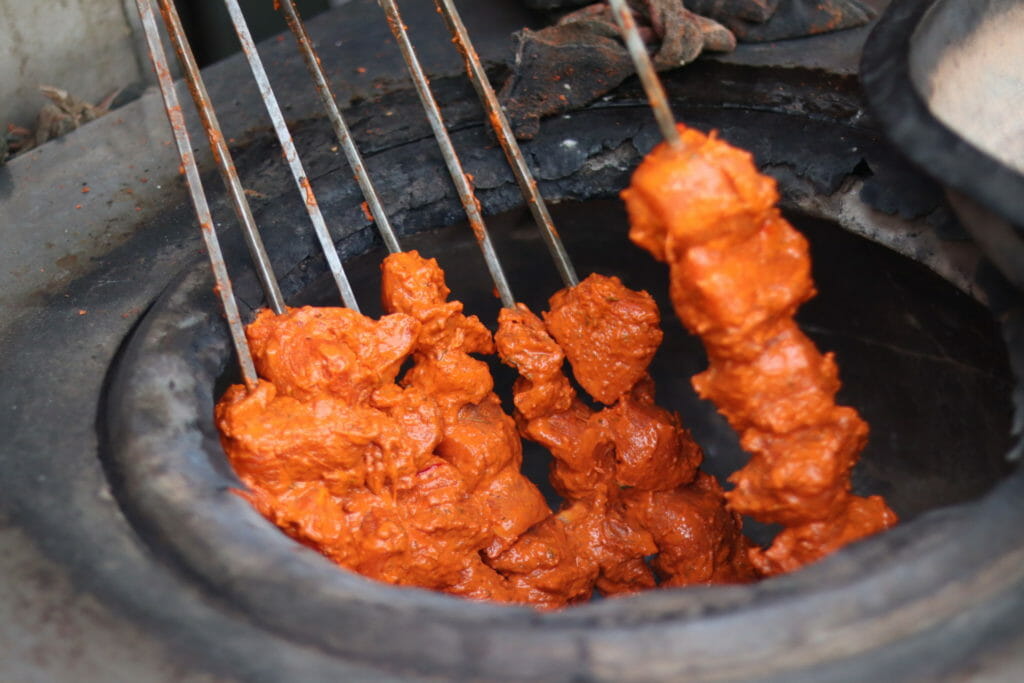One of the many kebab shops in Zakir Nagar market in the Okhla area is owned by Rehman Alam. The shop has been passed on to him by his ancestors and is famous for its variety and flavour of kebabs. He says, “The business we currently have here is thriving. It is all because of our traditional recipe, which includes roasting the kebabs on coal.” However, he is uncertain how events will unfold once coal usage is banned. “We may lose our specialty and customers who come to us regularly. I am worried our ancestral business might be affected,” he adds.
Alam’s plight is not discrete. Recently, the Centre for Air Quality Management (CAQM) announced a blanket ban on the domestic and industrial usage of coal in Delhi’s National Capital Region (NCR) from January 1, 2023. The embargo is in line with phasing out the use of coal to tackle concerns relating to worsening air pollution in the region.
Read more: Delhi’s toxic air: From emergency measures to sustained action
According to the World Health Organization, Delhi features right on top among the cities with the worst air pollution in the world. The city also had the world’s highest annual average concentration of PM 2.5 particles. But while it is established that coal production and consumption lead to worsening environmental conditions and must be curtailed, the future of those who depend on coal for their livelihood — especially Micro, Small, and Medium Enterprises (MSMEs) — hangs in peril with a ban on the resource. The anxiety amongst these small-scale business enterprises isn’t even quantifiable.
The anxiety among small business owners
I visited a few small enterprises in the Okhla region of Delhi NCR, which depend heavily on coal, and learned about the day-to-day operations of shop-owners here and how that is likely to be impacted post the coal ban in the region.
Yaseen owns a cart, an iron, and an LPG cylinder that he uses to iron the garments of the individuals surrounding the Johri Farm locality. He resides in the Batla House region and commutes back and forth daily. While he has managed to stick to the ironing business for the past 25-27 years, he has already made a shift from his coal-operated iron to the makeshift LPG-run iron. According to him, “I made a shift because coal was getting extremely costly, and if I would have stuck to it, it would have sucked any profit that I made.”
Talking about the high price of coal compared to LPG gas, he says, “At this time, coal is somewhere around INR 100-110 per kg, and LPG is around INR 60 per kg. If I use coal, then I will exhaust one kg in one day, and on the contrary, I can judiciously use one kg of LPG for up to three days.”

For Yaseen, making a switch was feasible and didn’t hamper his business prospects, but it is not as smooth a road for other pocket-sized enterprises. Twenty-seven-year-old Faizal owns a restaurant named Lazeez, at Tikona Park, within half a kilometre radius of Jamia Millia Islamia metro station. He started sitting at and managing the shop when he was just five years old!
“The reason why coal is used for making things like roasted chicken, tikkas, tandooris, etc. is that their taste multiplies manifold when they absorb the flavour of burning coal/smoke,” he explains.
So, what is his plan for the future after the coal ban? “All I need is the flavour of smoke to get that exact taste. Hence, instead of switching to LPG gas, I might just make use of wood.”

Other than Faizal, there are several shop owners here who sell products/food items that are made using coal, and they cannot think of a better alternative that can help retain their customer base and is also profitable to them. As the year moves towards its end and the timeline of enforcing the coal ban nears, their apprehensions are gradually intensifying.
Anubha Aggarwal, Programme Officer at Industrial Pollution Unit, Centre for Science and Environment, acknowledges the necessity for strategic planning for the smooth transition from coal. Especially in view of the financial predicament of those who depend on coal for survival. She says, “As we move away from coal, we do need to plan ahead and ensure that the coal phase-out strategy is inclusive of the communities dependent on coal for its livelihood.”
The way forward
India aims to reduce emissions and achieve net-zero carbon emission by 2070. Besides, by 2030, the country also aspires to enhance the energy capacity it derives from non-fossil fuels. With its efforts — such as banning coal to improve air quality and kicking in the single-use plastic (SUPs) ban to prevent plastic pollution — the nation seems to be progressing toward its climate goals.
Read more: How and what to communicate for successful bans on single use plastics
However, it is only six months until the blanket ban on coal production and consumption is planned to be enforced in Delhi NCR. Asked about this timeline, especially its implications for workers employed in the coal mining industries, Anubha says, “At present, we do not have a clear roadmap for ‘just transition’ for coal phase-out. So, it is difficult to give an approximation of how much time and resources it will take to ensure a regular income for the workers.”
Anubha shares that the country is yet to script a plan even for the frontline coal workers who have been working in the industries in Delhi NCR that “use almost 1.14 million tonnes of coal annually.” Hence, it can be reasonably deduced that concerns around the future of coal-dependent MSMEs operating independently, and those whose survival hinges on them, seem almost minor and secondary to the concern around workers waged in large-scale coal-run industries. As such the former are staring at considerable loss, with little or zero planning and assurances for a coal-free future.
In the face of growing anxiety and a lingering tension among a large section of coal-dependent small-scale businesses, including that of Rehman Alam’s, Yaseen’s, and Faizal’s, the immediate challenge for the country is to build its competency at many levels: infrastructural support, citizen awareness, skill development, appropriate guidance on better alternatives, among others.